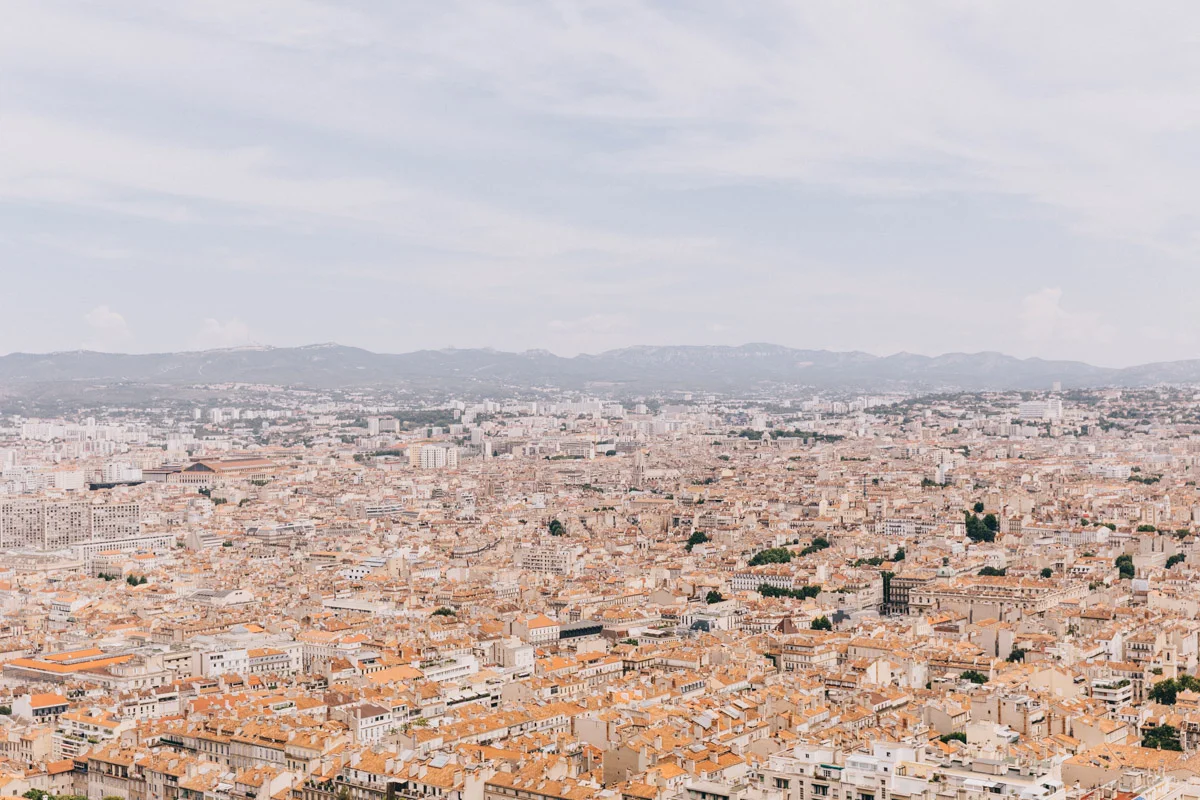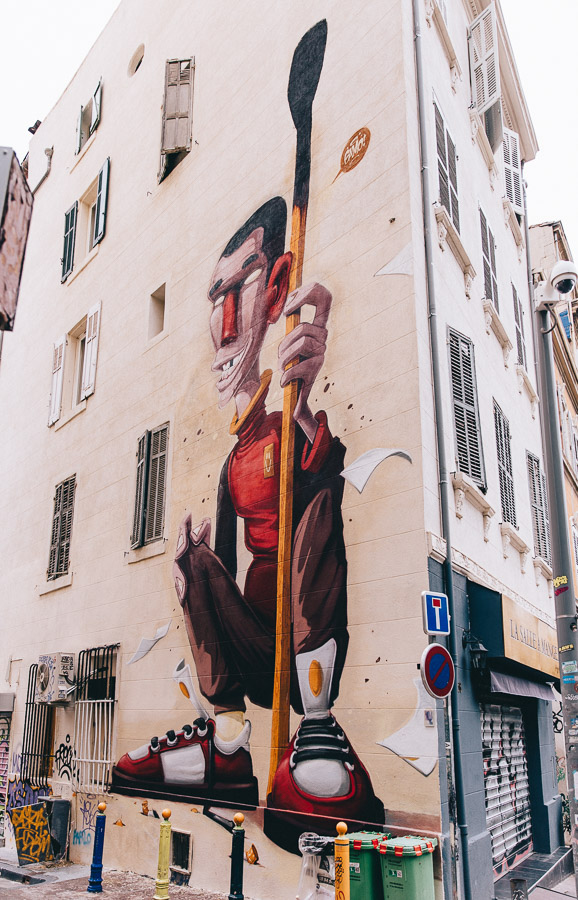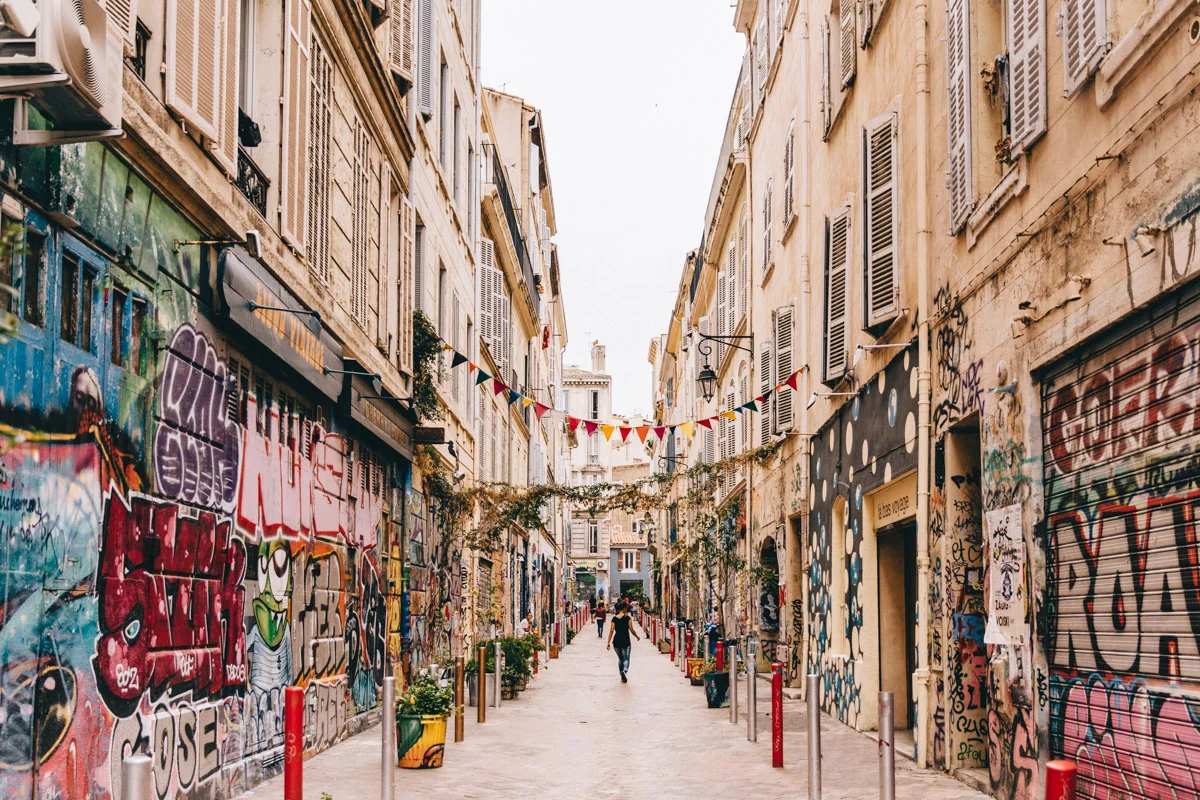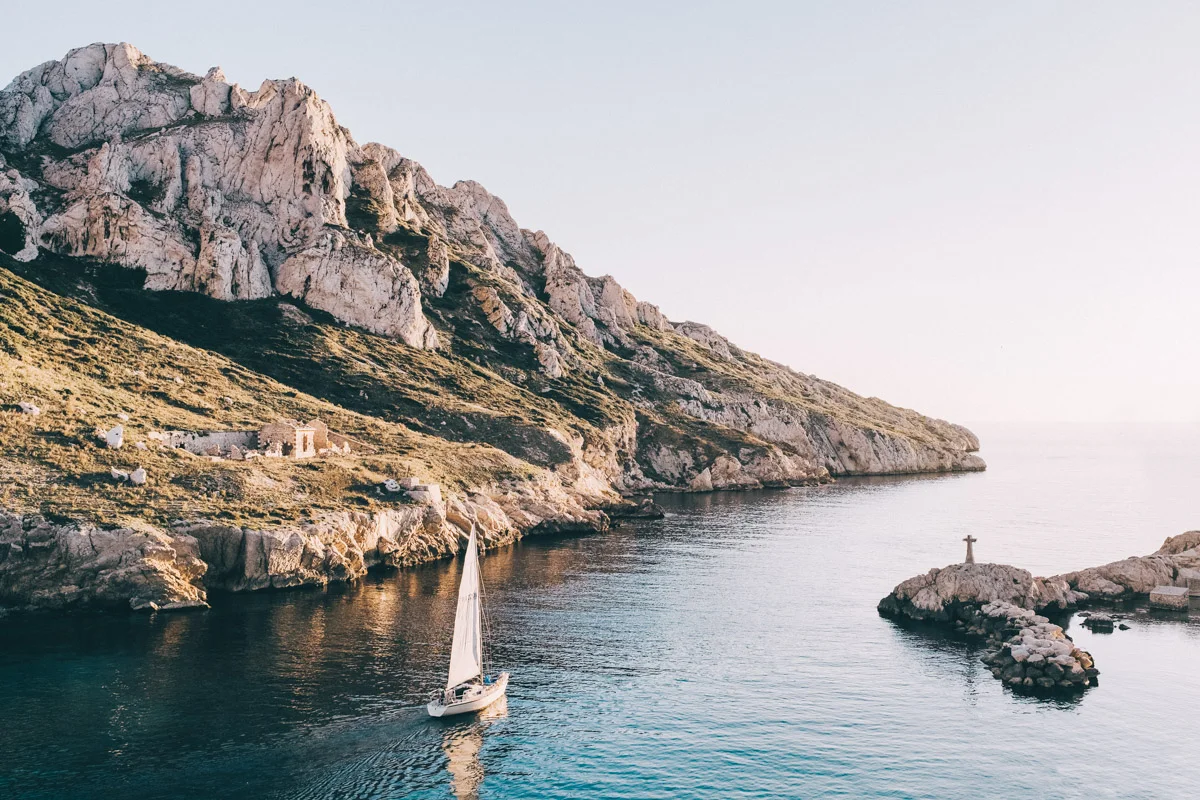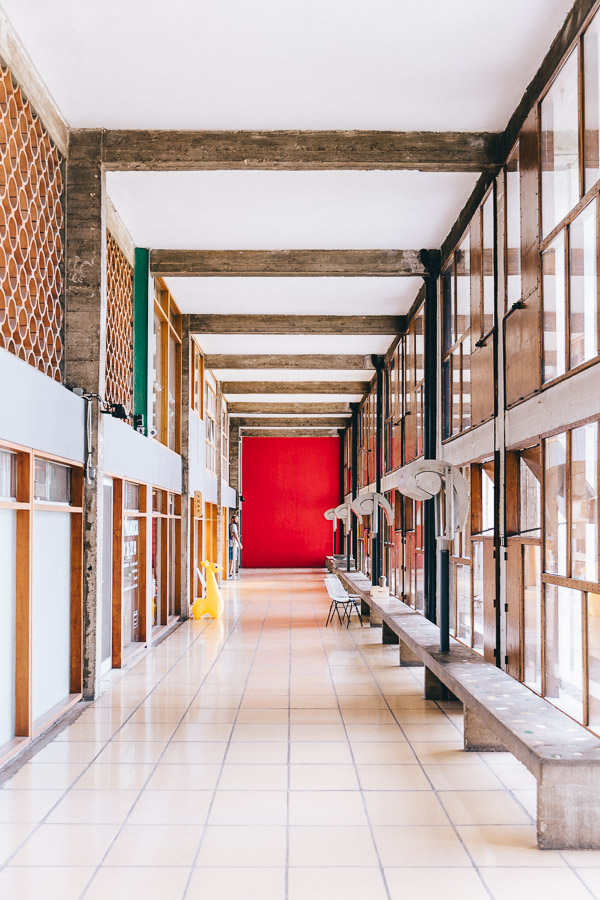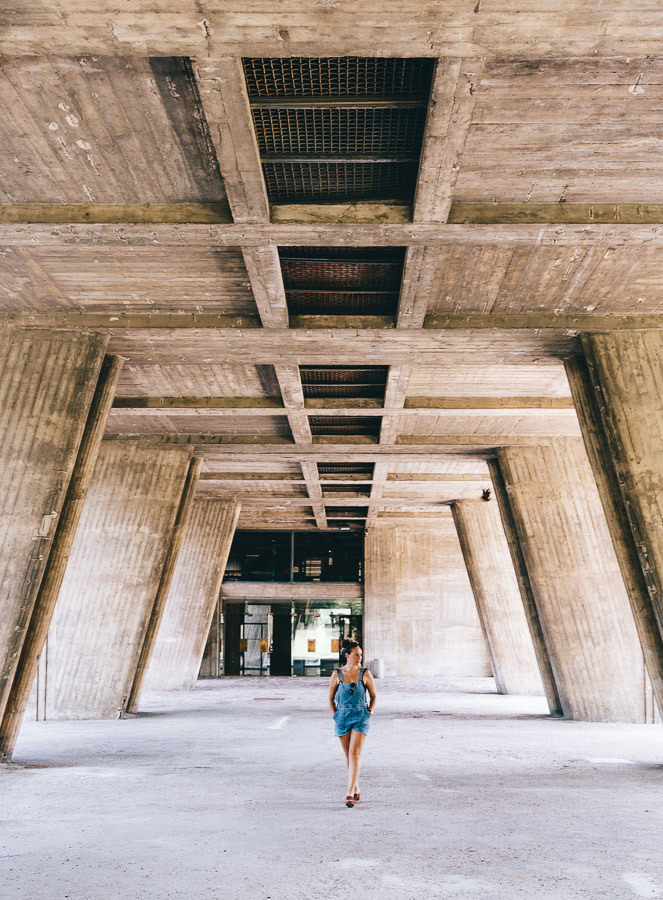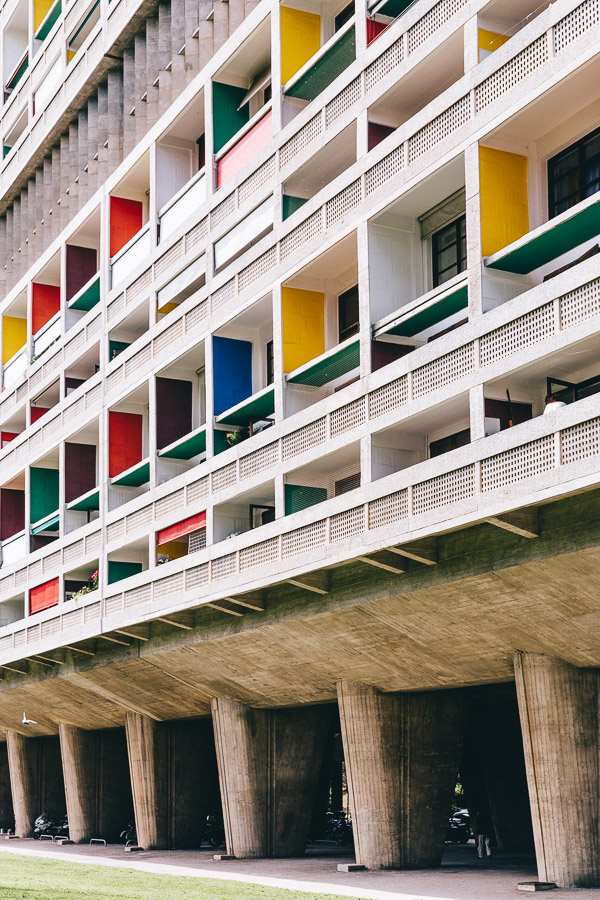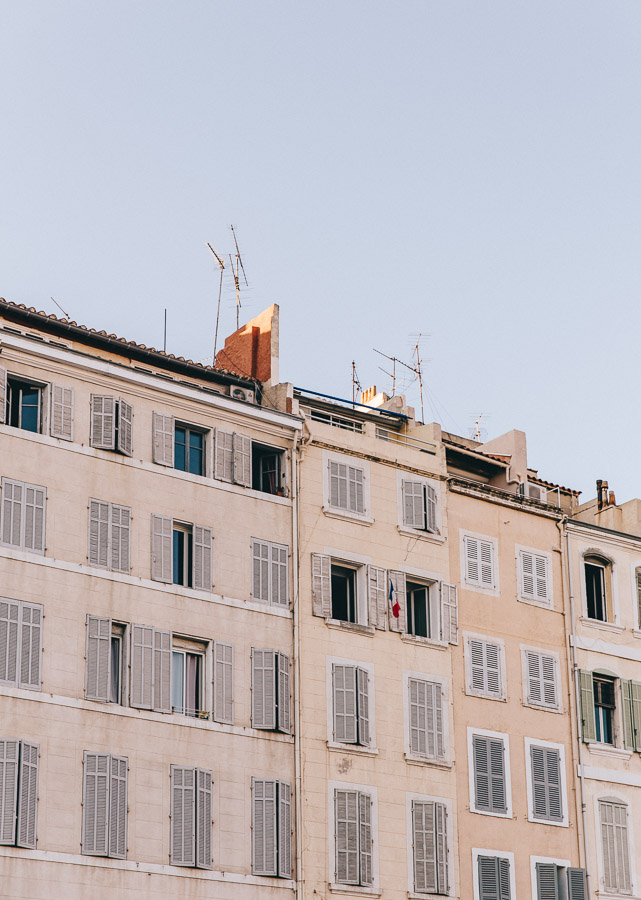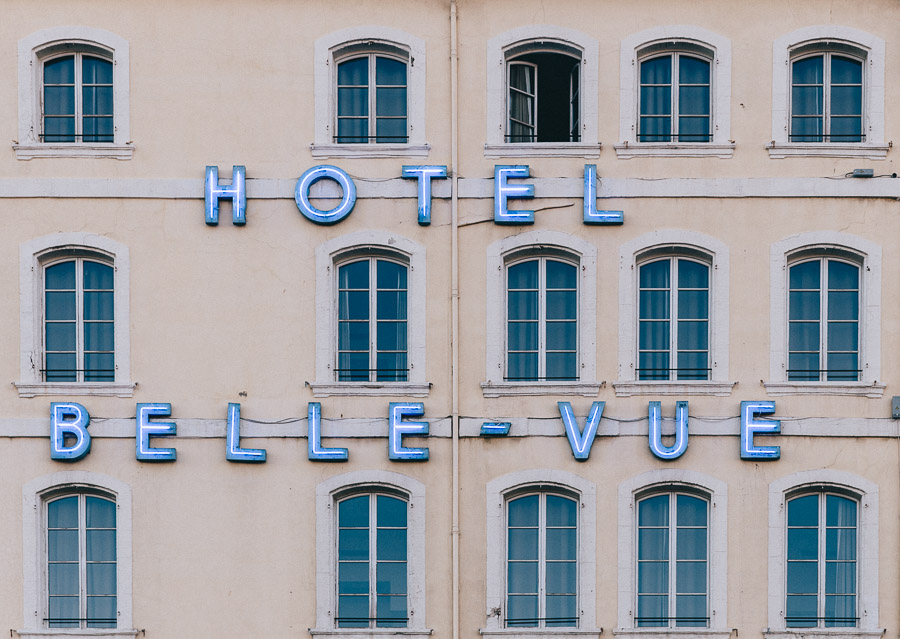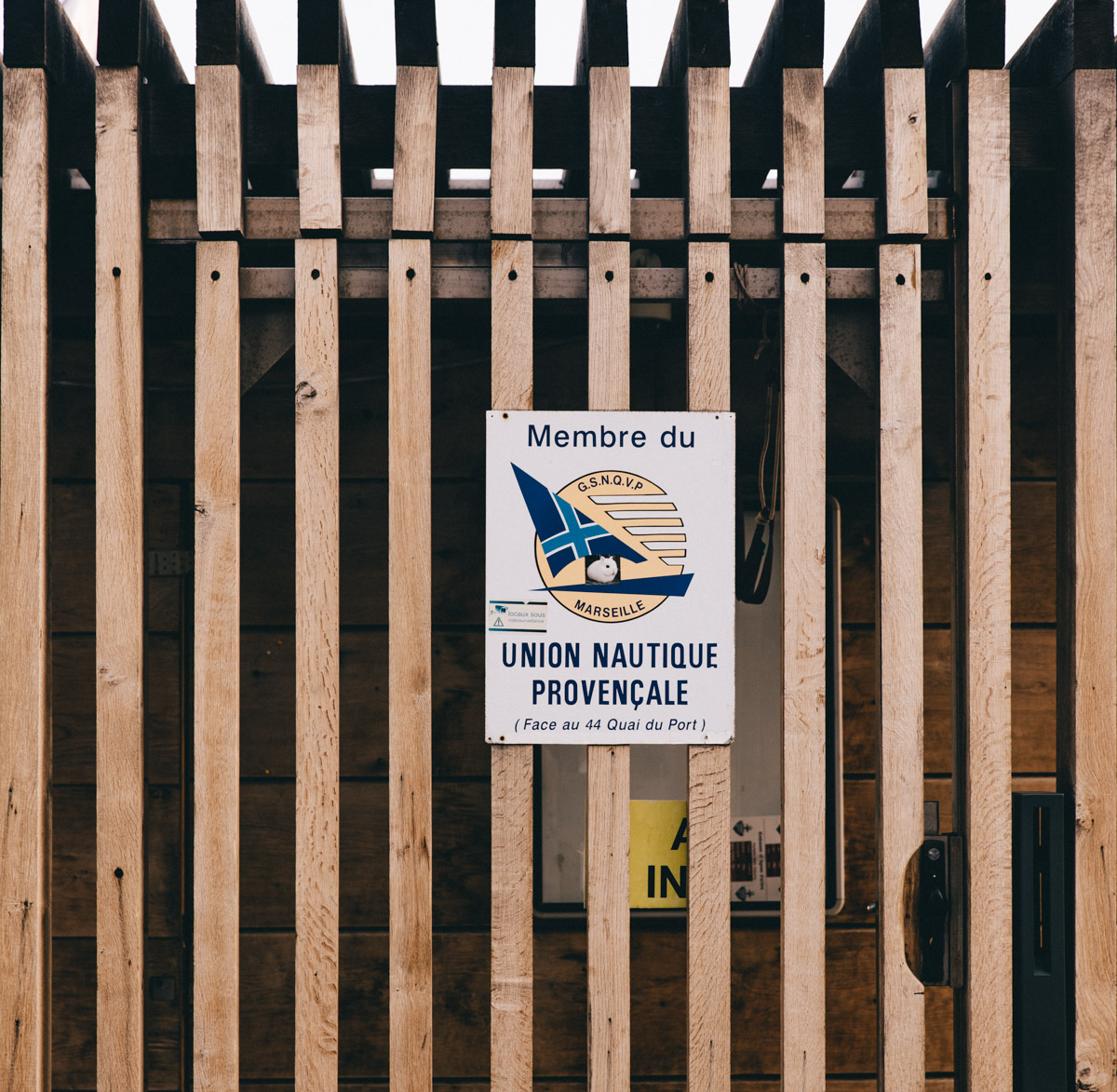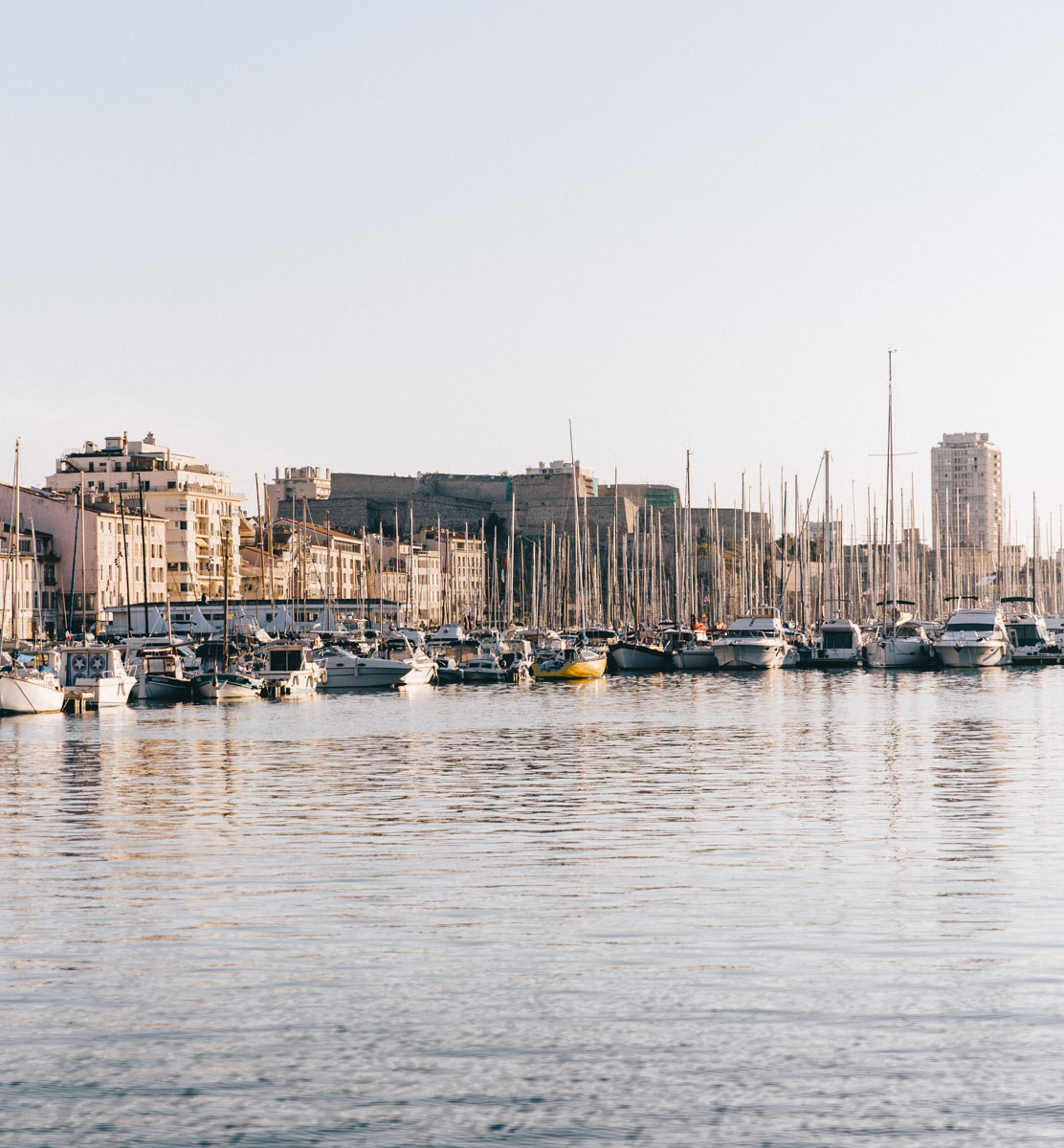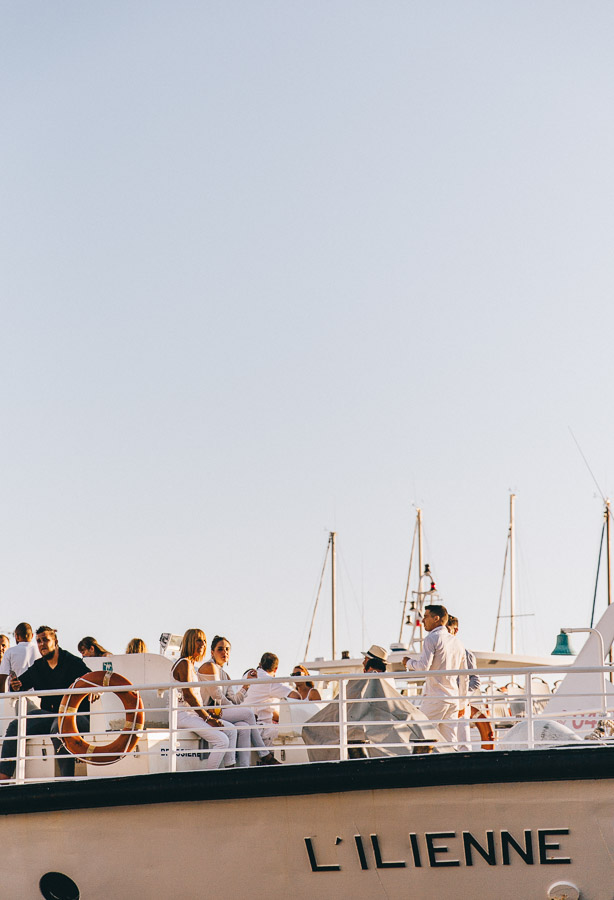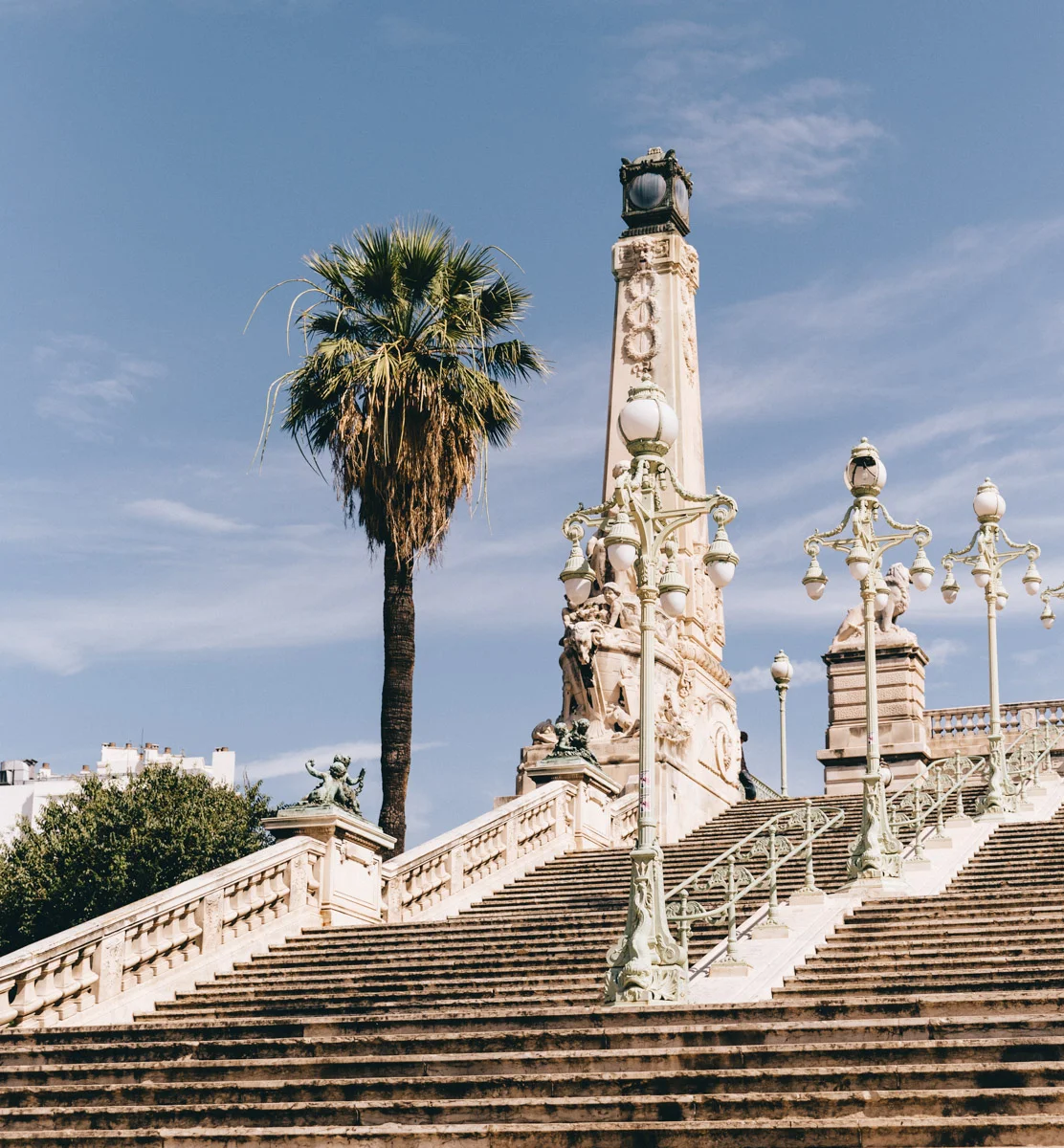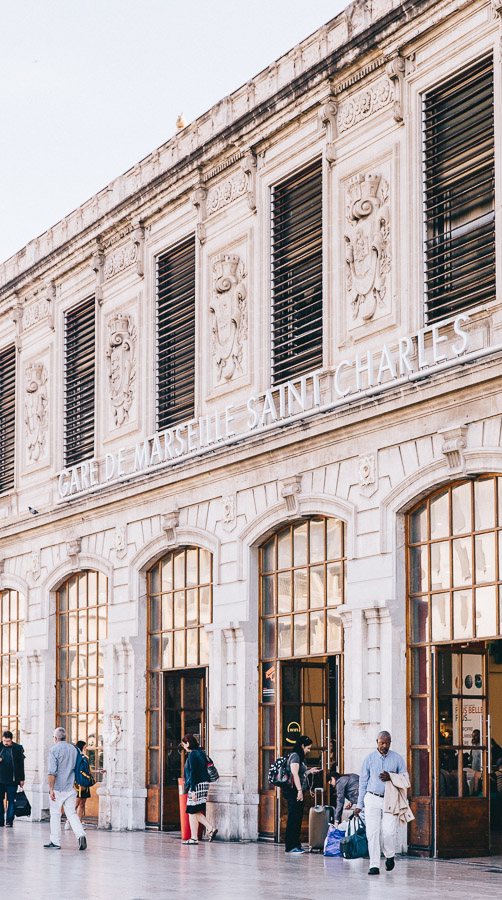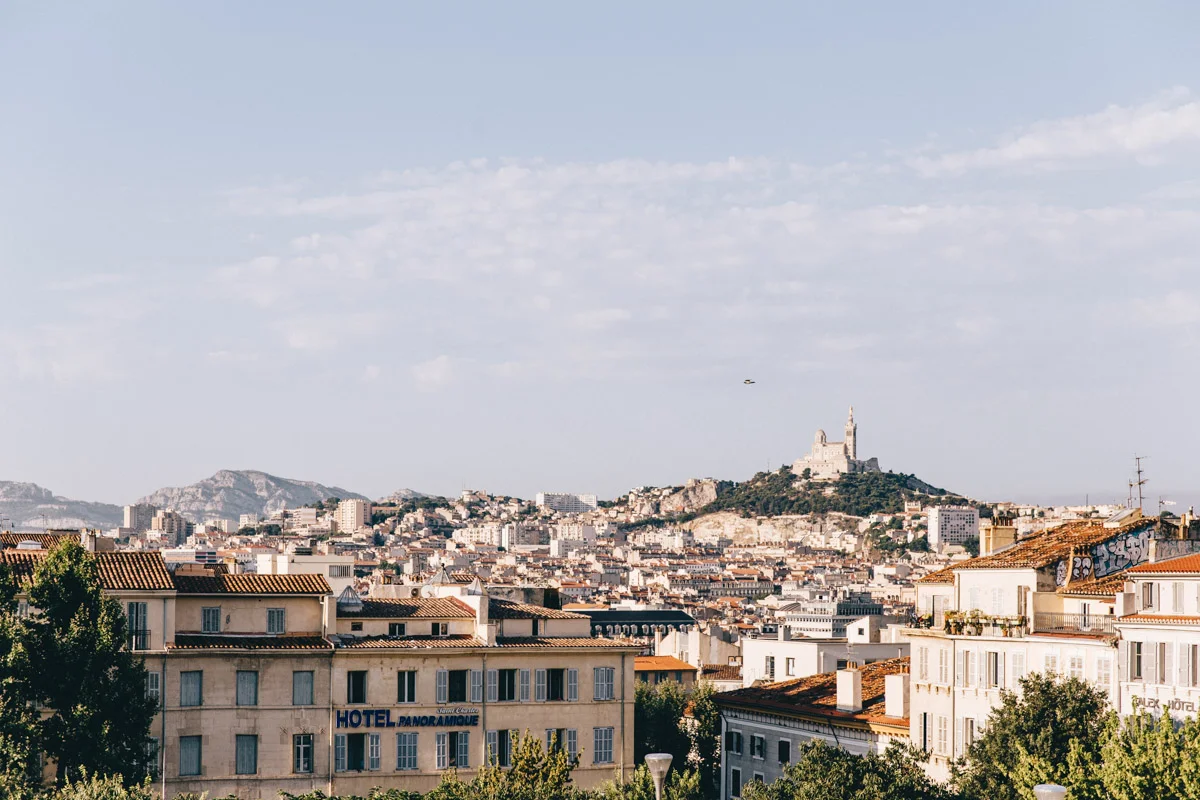Planning a city break to Marseille? You've come to the right place. This guide will show you what to do in Marseille, recommendations on where to stay and eat, plus our top tips on how to enjoy France’s second largest city.
Marseille has always rebelled.
It fought to retain its ways against centralising northern authorities after Provence joined the Kingdom of France. In the 17th century, the ‘sun king’ Louis XIV led his own army on the city to quash an uprising. The republic’s stirring national anthem, a symbol of patriotic rebellion against power, is even named La Marseillaise after the city's volunteer soldiers who sang it as they marched towards Paris.
This identity, of the rogue city (or city of rogues), has passed over into a blend of folklore and mythology, but remains integral to how Marseille is viewed and views itself within the dynamic of France.
Rougher, louder, prouder; a charming outsider, more Mediterranean than Gallic.
The second largest city in France, although it does have perennial arguments with Lyon about this, Marseille is also the country’s oldest. Founded by Greek sailors in 600 B.C., who gave the name Massalia, it has always been home to those who arrive over the seas to come and add their own identity to the mix. Present day Marseille reflects the port metropolis’ proximity to Algeria and France’s historical colonialism in the region, with a distinctly north African and Islamic influence clear in certain streets and scenes; small glasses on silver sauces with steaming mint tea, the sounds of men from the Maghreb arguing on corners, a call to prayer being carried on the mistral wind.
Though the city’s chequered reputation has often been sullied by stories of crime and corruption, since being named European City of Culture in 2013, it has undergone a renaissance of sorts. Many quartiers still retain a dishevelled, slightly chaotic and ruffle-haired mystique - at odds with the more pristinely manicured French carte postale scenes found all over Provence - but the famous old port has been regenerated and reworked, one of Europe’s most exciting museums has opened its doors to acclaim, whilst Marseille’s microcosm of the Med melting-pot culture where citizens of all stripes, wealths, and backgrounds live in close proximity to one another draws curious creatives towards it.
For travellers, Marseille now has a growing reputation as a excellent city-break destination that stands on its own two feet, rather than just a convenient gateway city to Provence. With its laid-back vibe shaped by 300 days of sunshine, a long weekend here is a pleasure if you know how to do it right.
Here are our favourite things to do in Marseille, plus our advice on where to stay, how to get around, and one experience you absolutely should not miss.
Things to do in Marseille
Discover Mucem
Up until a few years ago, museums in Marseille were not oft talked about amongst travellers. It had a handful, such as the Musée d’histoire de Marseille and Musée des Beaux-Arts, but none really stood out in a country and continent which offers so many centres of culture.
And then they built Mucem.
The Museum of European and Mediterranean Civilisations, to give Mucem its full name, is the latest instalment in the theory that a museum can not only transform a singular space, but give a city a new identity (the so-called Bilbao effect.)
Prior to our visit, the pictures we had seen of the big black block of honeycombed concrete by the water had piqued our curiosity, but we didn’t realise just how vast and varied Mucem was as a public space and institution until we set foot in it shortly after our flight touched down in Marseille airport.
Sprawling across the northern side of Marseille’s old port, Mucem encompasses more than the two striking modernist buildings which house its galleries and exhibitions; it is also the perfectly regenerated and reinvigorated buildings of fort Saint-Jean, it is the concrete spaces by the water where local children swim and adults sun themselves of an afternoon, and it’s the two thick black cantilever bridges which connect Mucem to the rest of the city, literally bridging the new and the old Marseille.
We only planned to take in a a couple of exhibits, but ended up spending six hours on our first day wandering around Mucem, taking photos, having lunch and lazing in the sunshine on the rooftop and by the sea; we think you'll love it.
Where | 7 promenade Robert Laffont, although there are various entry points to Mucem.
Cost | €9.50 per adult for entrance to all exhibitions. Entry is free for those under 18 years old on presentation of valid ID and is free for all on the 1st Sunday of every month
Times | Open daily, but check the website for season specific opening and closing times.
Good to Know | One of our the best spots to hang out in Marseille? The old ramparts of Fort Saint-Jean (Promenade Louis Brauquie) which are large enough for two to sit in, and look over the water and on to Mucem.
Get Lost in Le Panier
After the old port, Le Panier is the next part of Marseille where most visitors will spend their time - and we totally understand why.
Built upon the site where the Greeks first settled in 600 BC, Le Panier became a neighbourhood for the workers and immigrants of Marseille. Today, though bearing the usual hallmarks of gentrification, Le Panier feels instantly like one of these French literary dreamscapes. Slightly shabby and lovingly down at heel, replete with narrow streets of pastel-coloured shutters and steep staircases, it is somewhere to wander for several hours on foot blissful in the knowledge that the very act of trying to seek out its most captivating or most charming streets will lead you to miss them.
For us, that’s part of the magic.
Tip | France is difficult for vegetarians, but there are some good options in Le Panier. The first is Mamma Cucina (Rue des Repenties), whilst Douceur Piquante (Rue de l'Évêché) also has some vegetarian options. Place de Lenche is a good spot for a drink and rest, and a popular lunch spot.
Visit Marseille's Cathedral
Wherever you wander in the city, there's a good chance that you will have the spectacular Notre Dame de La Garde looking down on you from its hilltop vantage point. “La Bonne Mère” towers over the city like a bishop standing in judgement or keeping a protective watch over the citizens (you can probably take your pick depending on your views).
This captivating striped building, which also offers the most incredible view over Marseille, is however double-edge sword for visitors to the city. It is most certainly worth a visit (and the streets leading to it had a distinctly Montmartre vibe), but as one of the main tourist attractions in Marseille, it becomes far too crowded once the tour buses and cruise groups arrive in peak summer.
So, our advice is to pick your time to visit wisely and, like more touristy spots everywhere in the world, get here early in the morning (at least before 11 a.m.) or save your visit for late afternoon.
Where | Rue Fort du Sanctuaire
Cost | Free (but this still a working place of worship so please be aware and respectful).
Times | Open daily from 7 a.m. - 7.00 p.m. (October to March), and until 8 p.m. in summer months. Last entry is 45 minutes prior to the closing time.
Good to Know | The tourist train runs people up here (expect long queues for the ride back in summer), as does the number 60 public bus, whilst there is ample free parking spaces available if you have your own vehicle. However, if you want a proper pilgrimage, then you can do the steep 30 minute walk up the hill.
Street Art in Cours Julien
On our last day in Marseille, we decided to visit Cours Julien, perched in the 6th arrondisement, purely because we had heard it was an area that had been completely taken over by street art.
Now, we’ve seen more than our fair share of street art neighbourhoods so our expectations weren’t high. A few walls here, a few murals there - usually that’s all it takes.
How wrong we were.
Believe us when we tell you that this part of Marseille is a work of art. Every inch of wall and shop front appears to be covered in street art that is good.
Really, really, good.
On top of that, the square itself and streets which branch directly off of it have some really cool bars and restaurants, a community buzz, weekly street markets, live music, and just a captivating ambience.
It’s creative. It’s alive. It’s definitely the coolest part of Marseille we visited.
Note that some of the streets around Cours Julien felt a bit rough and ready, so just use your common sense and be aware of your surroundings.
Tip | Don’t leave without walking down Les Escaliers du Cours Julien (the staircase) to the bridge by one of the entrances to Notre Dame du Mont metro - when you look back at the stairs from the bridge you’ll get a surprise.
SAVON-FAIRE | Marseille is famous for its soaps, but many of the versions on sale to tourists poor imitations. Instead, go to Savonnerie Marseillaise de la Licorne (34 Cours Julien) or La Grande Savonnerie (36 Grand Rue) who continue to make it the traditional way.
Take a boat to a famous prison
A morning or afternoon trip out to the island of If, just twenty minutes boat ride off the coast of Marseille is a must-do for any city break.
The imperious Château d'If, immortalised by Dumas’ use of it in The Count of Monte Cristo, is the main attraction on this rocky outpost. One of the most inconic old prisons in Europe, it was final resting place for many a royal enemy from 1580 until 1871 (but not the hero from Dumas’ novel as it’s, you know, a work of fiction). From the island, you can also enjoy excellent views back over the city.
You can choose to visit only the island of If, or also include a trip to Friou island, a protected natural area popular with walkers and people looking to enjoy its two small beaches.
Need to know | Entry to the Château d'If is €6 per person. The boat journey takes 20 minutes with hourly departures from Quai de la Fraternité at the old port. Tickets are €10.80 for a round-trip (only to If) and €16.20 to include the island of Frioul.
With the Marseille City Pass, available for periods of 24, 48, or 72 hours, your boat to Château d’If is also included, alongside all public transport, museum entry, and the tourist train.
Explore La Cité Radieuse
"The Unité d'Habitation is an incredibly powerful sculpture, and the feeling of living inside a work of art is a daily reality.”
For people who have an interest in modern architecture, Marseille is a real treat. In addition to Mucem, the city is home to one of the absolute gems of 20th century design in Corbusier’s ‘La Cité Radieuse’. Seeking out curiosities like this on city breaks has become a bit of a passion of ours, and a journey out to this brutalist masterpiece did not disappoint.
A UNESCO World Heritage site, the complex remains home to hundreds as well as housing the Hotel Corbusier, shops, a gallery, swimming pool, nursery, and a number of buisinesses - which was a key tenet of what, at the time, was a radically new way of looking at communal living in which residents could “shop, play and live together in a ‘vertical garden city”
Called "la maison du fada” (the house of crazy) by some locals, visiting the clean concrete lines and colourful balcony squares remains a relatively off-the-beaten-track thing to do in Marseille (perhaps only the slightly crazy visit it?). After all, many aren’t interested in architecture and even fewer are fans of Brutalist structures.
When entering the building, you have to sign in at the concierge’s office on the ground floor. Visitors are only allowed to enter the 3rd, 4th, and 9th floors, the last of which is the rooftop gallery space of MAMO (it’s free to enter but, unfortunately the temporary exhibit when we visited was literally just a motorbike in a white room, so that was a bit of a let down). On the 3rd floor, there are a handful or particularly cool design and architecture shops.
Five other Unité’s were built, but Marseille’s is the pick of the bunch.
Need to know | To reach La Cite Radieuse, make your way to metro stop Castellane (line 1 - blue) or Rond-Point du Prado (line 2 - red) and then take bus #21 to ‘Le Corbusier’; buses 22, 22S and 521 also stop there. If you have your own car, there’s free parking within the complex.
Although the building is open and free to enter to the public, there is a guided visit with limited availability throughout the week.
Stroll the Old Port
The beating heart of Marseille through the centuries, its vieux port, may have had a gentrifying and slightly generic facelift in 2013, but continues to be central to life here.
After redevelopment work by the British architect Norman Foster to pedestrianise large swathes of the area and install Ombrière (a huge mirror canopy), it remains an attractive first stop for any city-breaker and a constant feature of everyone’s visit to Marseille (we think we walked up and down it about seven times!). Fishing boats and yachts in the same dock also hint to the contrasting fortunes which enjoy the seas.
Its identity also changes throughout the day; fishermen return with their catch to sell in the early morning, the afternoon is more laconic and tourist-centric Mediterranean vibe, whilst we noted that from about 7 p.m. each evening until late, the port transformed into a carnivalesque atmosphere with crowds full of families and young couples strolling by the water, buskers, live music, and diverse groups of independent stall holders.
One of our favourite moments in Marseille was sitting for a drink at about 6 p.m., just as the sun was setting and casting an orange-pink hue across the city, there was a slight breeze, people were starting to emerge for their evening stroll, and from our seats, the gently lapping waters of the Mediterranean were reflected In Foster’s Ombrière.
Tip | The old port is the go-to option for finding food at any time of day. We found the restaurants on the ‘Quai du Port’ side of the port to be pricey and a bit uninspired (dishes starting at €18), whilst those on the ‘Quai de Rive Neuve’ were much more affordable and atmospheric, specifically on Cours Jean Ballard, Rue Saint-Saëns, and Cours Honoré d'Estienne d’Orves. This sage advice had been given to us by a taxi driver on our first day, and it proved to be bang on the money. This part of the port feels less touristy overall and we enjoyed having a drink in this area too.
Unfortunately we didn’t try Marseille’s signature bouillabaisse dish (a fish stew) because anything under €35 is impossible to find (and not that advisable to eat if you do find it); Chez Michel and Miramar were mentioned when we asked our friendly Nepolitan taxi driver for his advice on the best places for it.
The Staircase of Gare St Charles
Although it’s an absolute pain when you have luggage to carry, the grand staircase at Gare St Charles, Marseille’s train station, is a work of art and we feel deserves to be viewed as a sigh in itself, rather than just a means to an end. With two female nude sculptures representing the African and Asian colonies - these would viewed as questionable in taste these days - leading to depictions of Marseille’s Greek origins, its shipping line fortunes, and various regional motifs.
Opened to the public in 1927, the stairs are a reason to make sure you arrive for your train with more than a few minutes to spare.
A couple of people we met said that, over the last few years, more people are basing themselves in Marseille and taking day trips from there, rather than simply using Marseille as their entry and exit point in Provence. The most popular day trips from Marseille, leaving by train or bus from St Charles, include Avignon, Aix-en-Provence, Orange and Arles. For those looking to stretch their sea legs, the bays of nearby Calangque are also popular a popular spot for a cruise.
Absolutely Don't Miss...
We like to include one thing that, regardless of your budget, travel style, or length of stay, we think you absolutely must do in a place.
In Marseille, it's sipping on pastis.
“…as French as berets and pétanque”, the pale yellow glasses of pastis one will soon notice on the bar tables of Marseille are something that is intrinsically linked with any trip we take to the south. With star anise the main ingredient, the liquorice notes of pastis do take a little getting used to for the uninitiated, but it's undoubtedly refreshing to sip on in the afternoon heat.
So, we highly recommend you find an empty table in the shade by the shimmering water (pastis tastes infinitely better on sunny days), ask for ‘un pastis s’il vous plait’, look out upon the scenes unfolding before you, and contemplate life for an hour.
If you’d like to find out more about pastis, and purchase some brands beyond Ricard, the place to visit is La Maison du Pastis at the old port.
Did you know | Pastis was created in the 1930s to fill the gap created by the banning of absinthe in France.
Where to stay in Marseille
Down by the water of the vieux port is the most popular and convenient spot to stay in Marseille, with great views and close proximity to bars, restaurants etc. However, those looking for a more alternative experience of the city should look towards accommodation in Cours Julien or by the train station.
Here are our pick of the coolest and best value places to stay in Marseille.
Mama Shelter | Set in the bohemian area of Cours Julien, Mama Shelter is a creative and cool base for any Marseille city break. It's also excellent value with double rooms from £81 per night - check prices and availability.
La Résidence Du Vieux Port | For those who prefer to be based in a prime location by the port, then La Residence due Vieux Port is ideal. The sea and cathedral views from most of the rooms are a joy to wake up to, and each room is spacious and modern.
A double room starts at £180, with various suites also available - check prices and availability.
Pension Edelweiss | If you're couple visiting Marseille and looking for a unique, affordable, and memorable place to spend a few nights, then this is the bed-and-breakfast for you. Decorated wonderfully head to toe in vintage furniture, it has only four boutique double bedrooms and is a one-of-a-kind accommodation. The breakfast, included in the price, receives rave reviews too.
A double room at Edelweiss costs £80 - check availability here.
Alex Hotel & Spa | A stylish boutique hotel with the colour blue as a theme throughout, the Alex is perfect for those who want to be based right next to Marseille's train station but still within walking distance of the old port.
Doubles available from £92 - find out more here.
Vertigo | The most popular and highly-rated hostels in Marseille, Vertigo has two options for backpackers and city-breakers. You can opt for its hostel in the vieux port or go for a dorm or a double (from £67) at Vertigo Centre which is in the Arab Quarter, five minutes walk from the train station. Both have a guest kitchen and lockers.
Dorm beds start at £26.
Toyoko Inn | A budget best-seller, with comfortable and clean double rooms 8 minutes walk from the train station. Double rooms start at £64. Check availability here.
Airbnb | A great option for city breaks, there are lots of affordable and stylish options in the city - take a look at the best Airbnbs in Marseille.
How To Get Around Marseille
We largely walked around Marseille, and the city is relatively easy to navigate on foot during the day - for example, from the train station to the vieux port it’s a 20 minute walk. You do however have to be aware that it can get unfathomably hot mid-afternoon and, in the evening, it is sensible to take a taxi or public transport if you're far from your accommodation.
The small tourist train is usually the most convenient way for those short on time looking to go to the main sights, rather than public transport.
Public Transport
There are two metro lines, the blue one (M1) and the red one (M2), running north and south. Marseille’s comprehensive bus network will run city-breakers up to the Cathedral, to Pharo-Catalans, and close to some other places of interest; we didn’t have to take any of the tram lines during our short visit.
A single ticket costs €1.70, and allows unlimited transfers onto a bus or tram within 1 hour of first use, but this only includes one entry to the metro. Tickets are available from machines in metro stations and at tram stops, but the same single ticket costs €2.00 if purchased on a bus.
Note that the City Pass Marseille includes unlimited rides on the metro, buses, tram, tourist train, the boat journey to Château d’If (usually a €10.80 round-trip per person), plus free access to the museums (including Mucem) and various discounts for use across the city. It can be valid for 24, 48 or, 72 hours - find out more and buy one here.
Train
As we said, the beautiful station of Marseille St Charles is worth a visit itself, and is well connected to the rest of the city. From here you can take the either of the metro lines, a number of buses, or simply walk the 1.5 kms to the old port. From Marseille train station, it is also easy to take day trips to Nice, Aix-en-Provence, and Avignon, or make connections to further afield in France (Paris is only 3 hours away).
Marseille’s Bus Station (Gare Routière Saint-Charles) is right next to the train station, with connections to various destinations in France, Spain and Italy.
Bicycle
Like many European cities, Marseille has a bicycle rental scheme in place with 130 stations across the city. For short-term visitors, your best option is to pay €1 which allows you to use the service as often as you wish for 7 consecutive days. The first 30 minutes of hire are free, with minimal charges if you don’t return it to a dock before your time is up. To sign-up, visit here, and it’s a good idea to download the Univélo Marseille mobile app if you plan on renting.
Travel to + from Marseille Airport
Marseille Provence International Airport is just 25 kms from the city centre and easy to reach by bus. From the airport, just take the the direct Navette Aeroport – Gare Saint Charles bus (€8.50 per person or €13.40 for a return ticket), which leaves every 20 minutes and only takes 30 minutes reach Marseille’s train and bus station. Tickets can be purchased online or from the counter at the main airport terminal.
From the UK, Marseille is a very affordable destination for a city break or as the gateway to discovering Provence. Budget airlines Ryanair and Easyjet, in addition to British Airway, have daily London - Marseille flights (two hours), Note that Terminal 2 in Marseille, the one which the budget airlines use, is pretty awful.
If you are flying into the city and want to rent car in Marseille airport to travel within Provence, we recommend using AutoEurope to find the best prices for car rental and to make secure online reservations.
Note that there is now a direct Eurostar service from London to Marseille, with a journey time of 6.5 hours, though a more frequent service runs with a change in Paris; it is however usually much more expensive than flying.
Is Marseille Safe?
Marseille, for a variety of reasons, suffers in its reputation as somewhere that is slightly dangerous. With regards to this being relevant for city-breakers and other visitors, it’s important to note that we had no issues during our few days in the city.
However, a number of locals did specifically and stridently advise us about wandering around too much after dark - so we feel it is necessary to pass this advice on to you.
Indeed, as the summer sunshine begins to fade into dusk, the city’s atmosphere did change from a, perhaps, romanticised version of Marseille into one where its ‘Jekyll’ feels like it's bubbling under the surface. The main thoroughfare of La Canebière began to feel a little unsavoury, narrow streets were a little less inviting, large groups of young men hung around on corners, and we were less willing to wander at will.
So, as with all cities, use your common sense during the day and be a little more cautious and conscious of your surroundings in the evening; there's no need to be paranoid, but just be aware. Taking a taxi or Uber back after dark, instead of walking, is sensible.
For more ideas and inspiration on travel in France, check out France.fr.
Like it? Pin it!




















